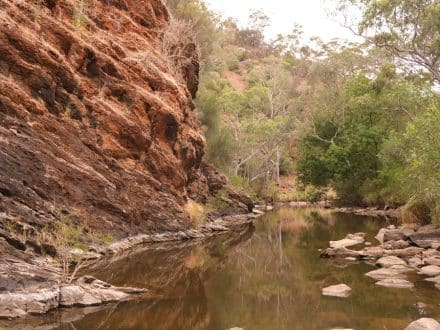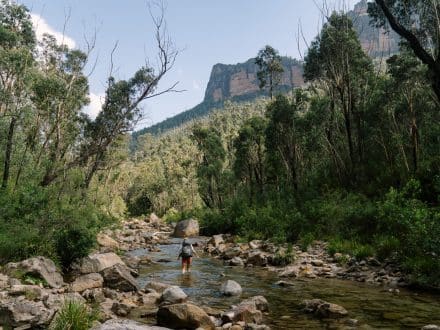A remote cluster of volcanic peaks in NSW is home to some of the best bushwalking and stargazing in the land.
West of the Great Dividing Range, the knots and creases of the mountains slowly relax into endless sandstone plains carved by shallow valleys and creeks. The sky weighs so heavily on the landscape that it is almost oppressive, flattening everything beneath its gaze. That is, until the Warrumbungle Mountains suddenly rise from the western horizon. Just beyond Coonabarabran, this cluster of volcanic peaks reaches up to 1,200 metres above sea level and is home to some of the best bushwalking and stargazing in the country.


Despite its remoteness, or more likely because of it, this area has always been a meeting place. This is the intersection of three Aboriginal language groups; Wiradjuri to the south, Wailwan to the west and Kamilaroi to the north and east.
It is the transition zone between the arid western plains and the wetter coastal zone of Australia. And finally, it is the intersection of land and sky, where clear weather and freedom from arti cial light opens a window from Earth deep into the cosmos.
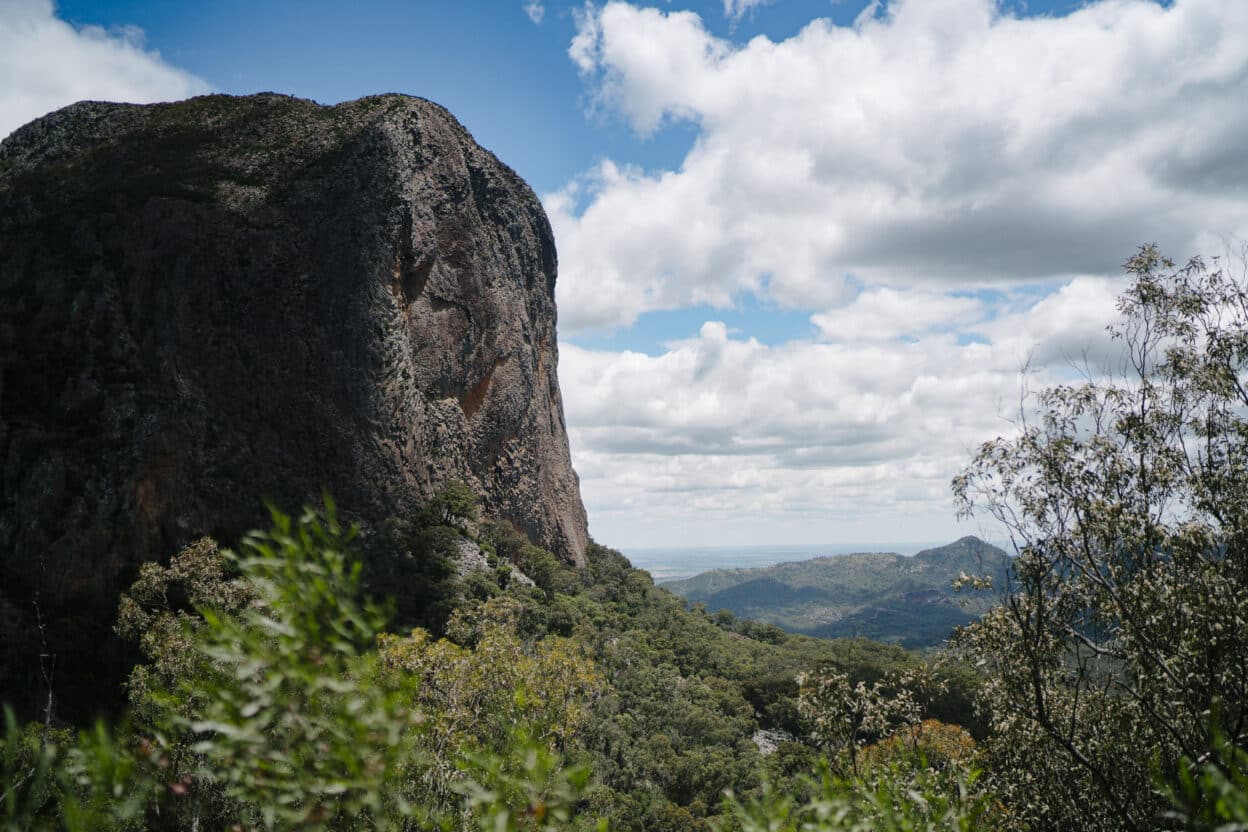
Warrumbungle is a Kamilaroi word meaning ‘crooked mountain’ and the scattered peaks are the remnants of a 50-kilometre shield volcano that erupted between 14-17 million years ago. The distinct trachyte pillars, domes and wafer-thin ridges are places where lava had pushed up through layers of sandstone to reach the surface. After millions of years, the softer rock layers have eroded to reveal the landscape we enjoy today.
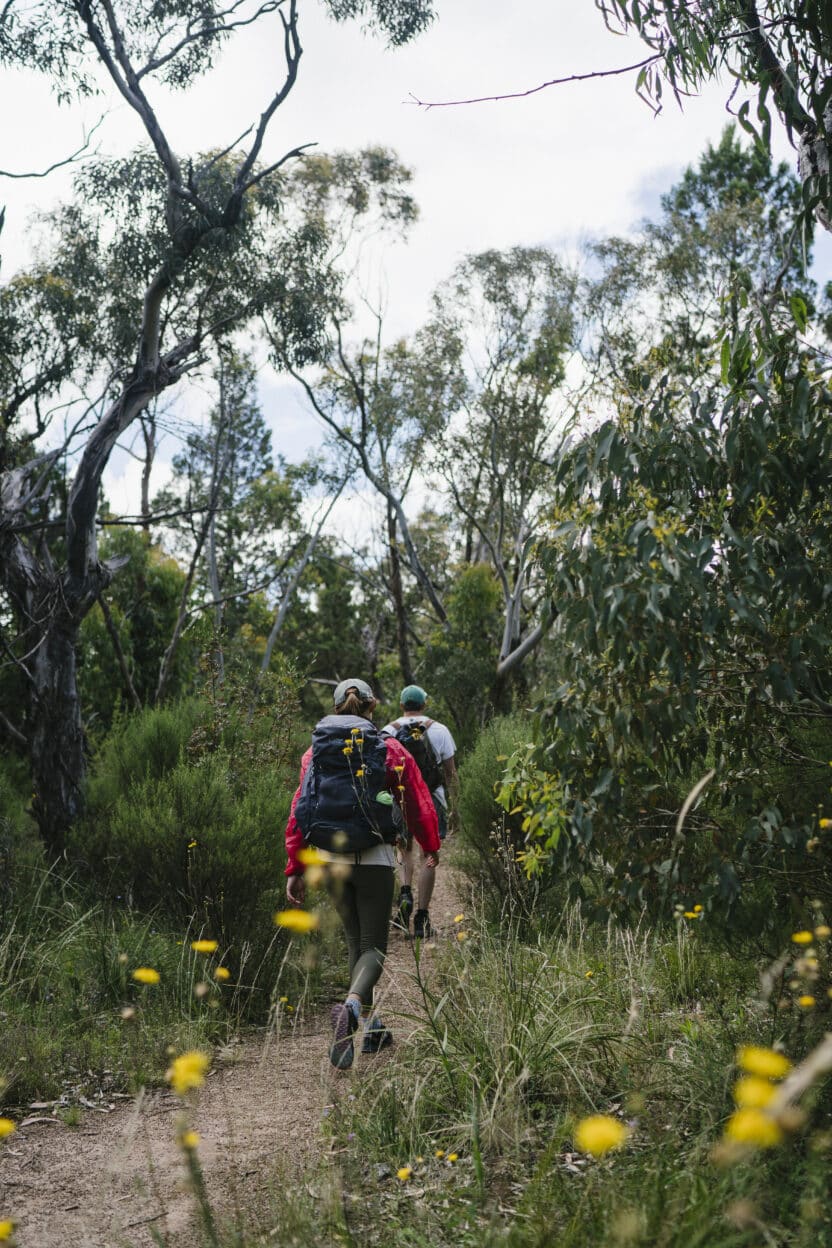
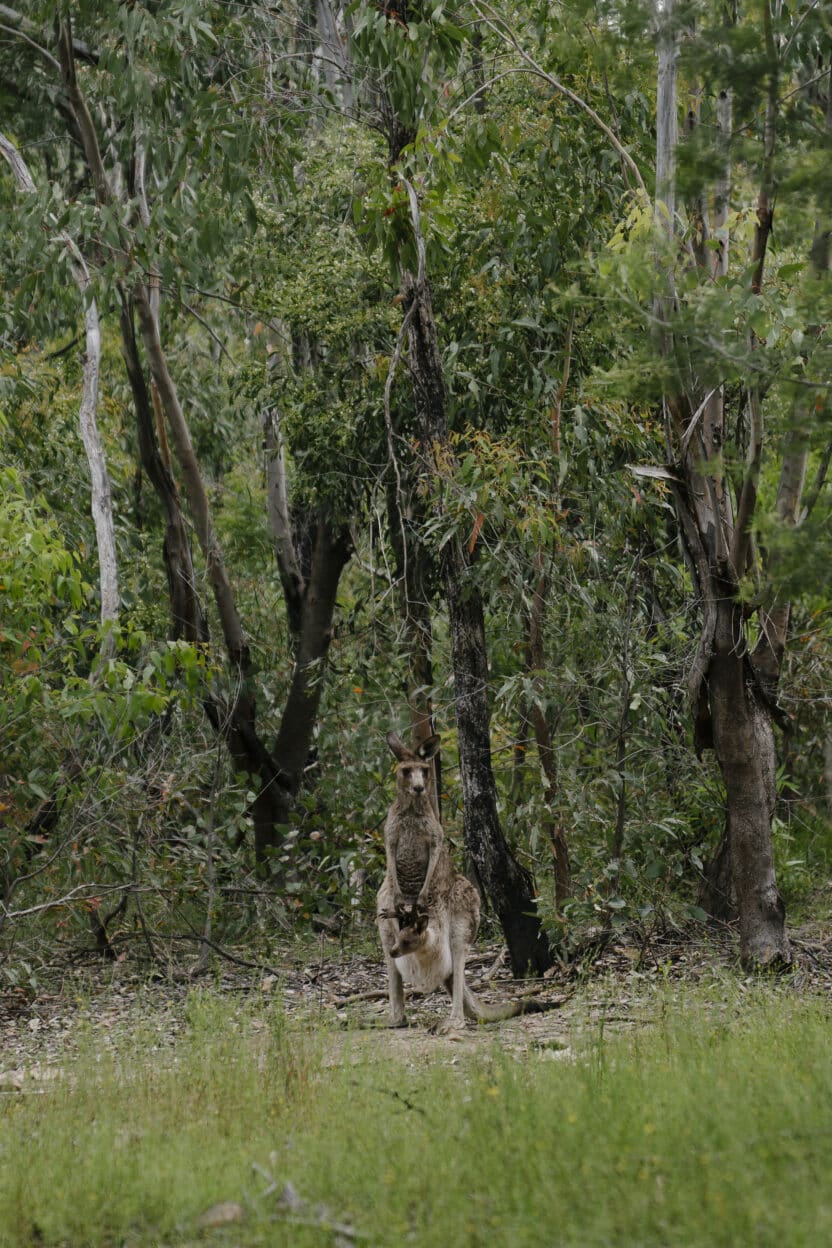
With so much to take in, the best way to enjoy the national park is hiking the Breadknife and Grand High Tops Circuit (14.5 kilometres). This track takes you into the centre of the most iconic features, allowing you to experience them up close from almost every angle. It’s a solid day hike or you can stay at one of several campgrounds on the circuit.
The walk starts at Pincham car park, where a well- maintained path leads down to Spirey Creek. Walking in this lush valley, you can see the scars of bush re written on every surface. Bright green shoots erupt from white box eucalyptus and scribbly gums, while dense shrubs furiously compete to fill a young understory. The newness of trails and bridges give evidence to the catastrophic bush re that razed 90 per cent of the national park in 2013. It’s heartening to see this steady recovery and you cannot help but appreciate the amount of work that has gone into making this wilderness accessible again.

The path stays close to the creek and it’s about 1.25 kilometres to the junction with West Spirey Creek, where the track will rejoin on the return trip. Keep left and follow signs to the Grand High Tops. Listen for distinct banjo ‘bonk’ sound of the pobblebonk frog, always heard but seldom seen. The trail crosses the creek a few times before veering away from the water and into the mountains.
It’s a steep but rewarding one-kilometre climb as the paved track becomes a series of metal staircases.
At the top of the final staircase is a junction with a short side trip to Balor Hut. This rustic mountain shack would be our campground of choice for an overnight trip. Today, however, we just stop to take in the views while we greedily eat handfuls of peanut and chocolate chip-studded trail mix. Backtrack to the junction and follow signs to the Grand High Tops. The track is mercifully shaded as it follows the base of the Breadknife for a kilometre of gruelling switchbacks. Near the summit, the path is rocky and exposed. The spectacular Belougery Spire, Breadknife and Crater Blu come into full view as we follow the reflective trail badges to reach the survey marker. This is the literal and metaphorical high point of the hike. The whole state seems to be below you, an endless sandstone sea punctuated by volcanic islands. Today, we eat lunch in the sky.
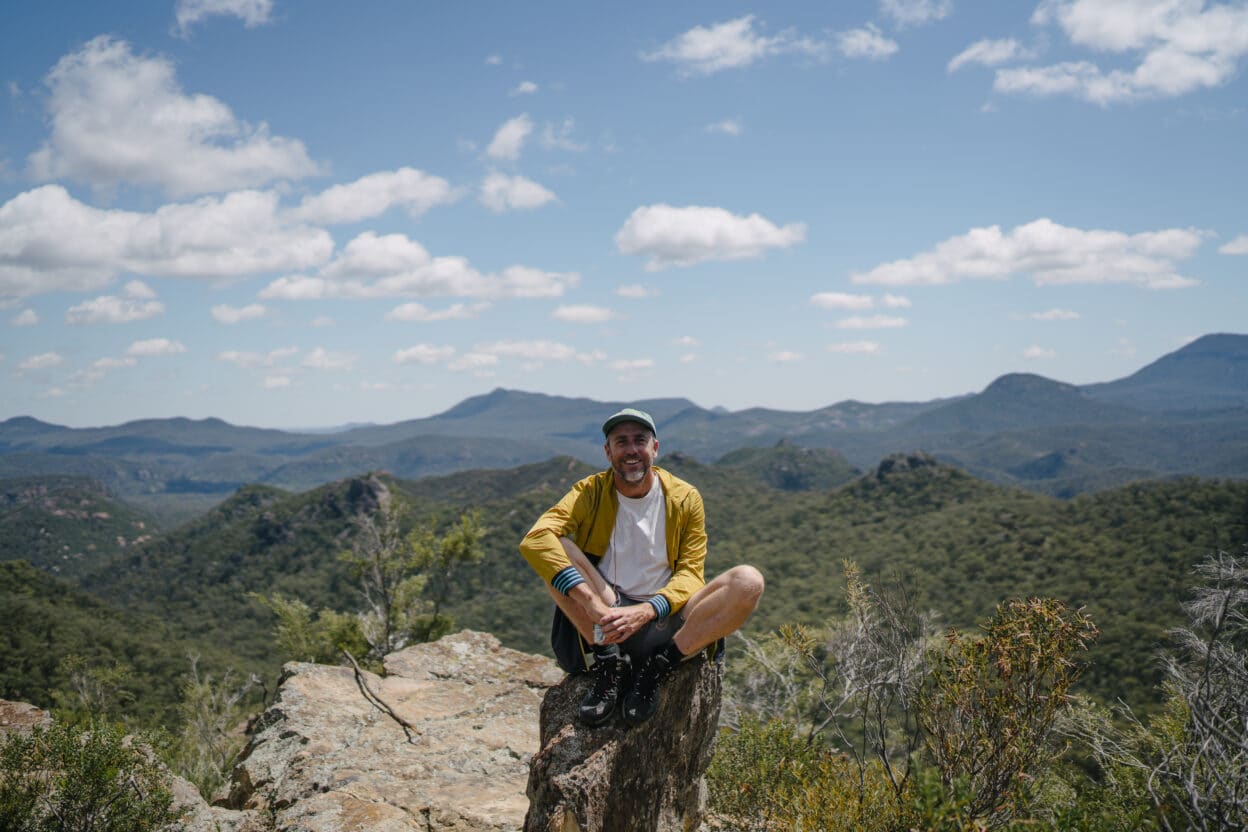
We reluctantly give up our perch and follow the re ective badges down the other side to the saddle at Dagba Gap (about the halfway point of this walk). There is an option to take Dagba Shortcut back toward Balor Hut and to return to the car park – but we always prefer a circuit, even if it adds a couple of kilometres. Follow signs to Blu Mountain, it’s another kilometre to Nuada Saddle and Dows Camp.
Keen hikers will take an optional side trip up Bluff Mountain before continuing the steady descent toward West Spirey Creek. The track follows the contours of a narrow ridge with frequent stops at viewpoints. Wild owers kiss our shoes as we lock into the hypnotic march of the return trip.
Follow signs to Pincham car park as you descend into West Spirey Creek. The air is cool and hospitable in this small tributary. I wish I could say we were discussing red-rumped parrots and grey kangaroos, but conversation had long since turned to thickshakes and potato cakes. It’s a couple of easy kilometres back to the car park, where we slump into our car seats with weary joy. The biggest challenge of the day will be staying up late enough to see the stars.

